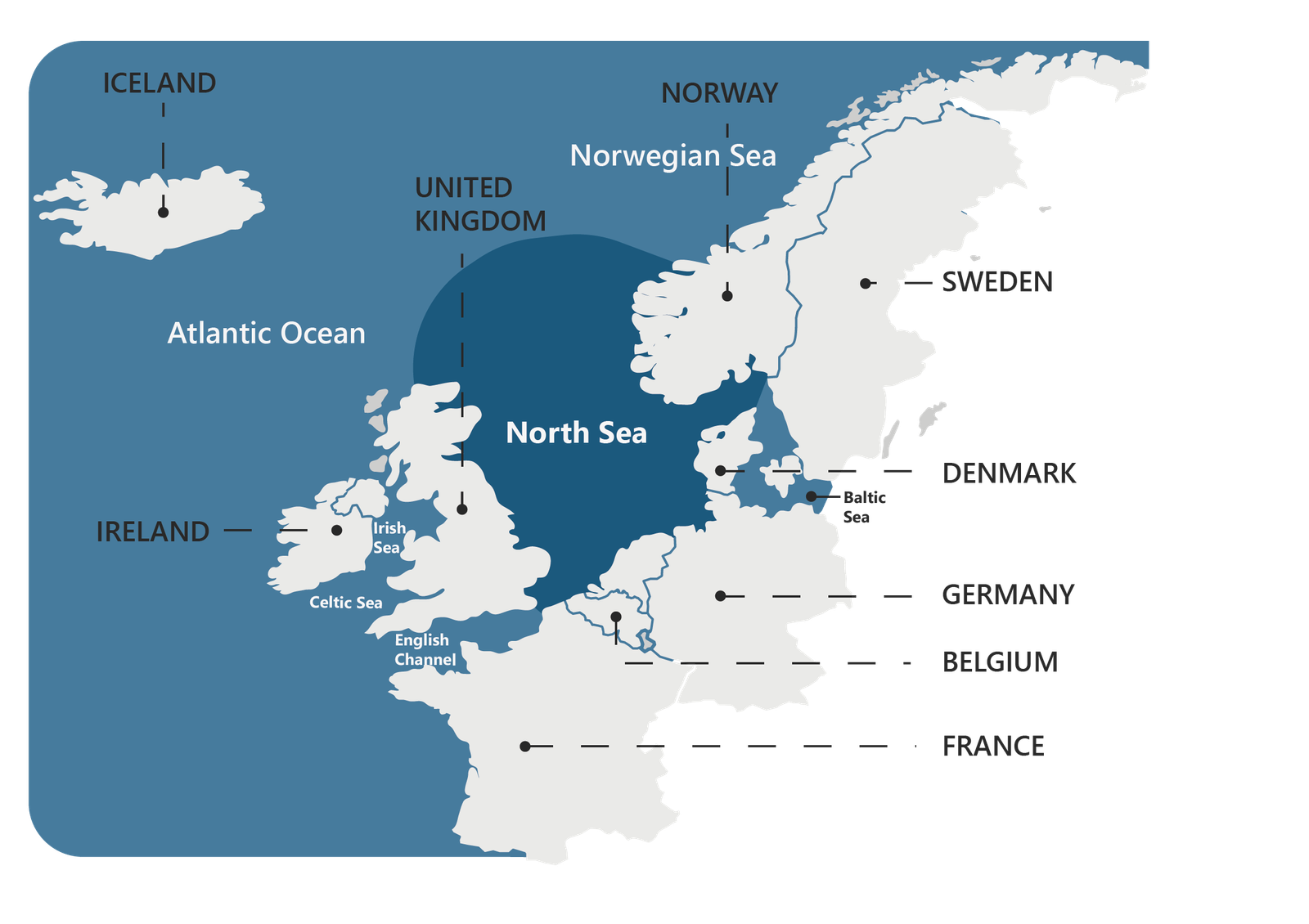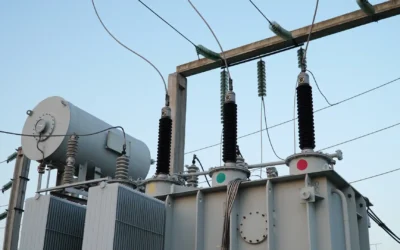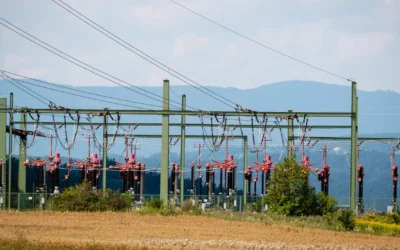• Collectively, they have set a very ambitious target to deploy 120 GW of offshore wind generation capacity by 2030 and 300 GW of offshore wind generation capacity by 2050.
• Although Europe is optimistic about meeting its goals set in the North Sea Summit for 2030 and 2050, there are a few challenges that can hinder progress.
The Ukraine war intensified energy security concerns in Europe, in turn pushing countries in the region to reduce dependence on Russian fossil fuels. The region is now deploying solutions that can provide relief in the short and long term, including buying LNG from the spot market, making long-term LNG contracts with countries like Qatar and UAE, enhancing the LNG import capability, and accelerating the transition to renewable energy. Within renewable energy, the EU observed that there is significant potential in offshore wind energy, especially in the North Sea, which needs to be unlocked if the region is to cater to the growing energy security concerns.
North Sea Summit 2023
On 25 April, leaders of nine European countries met in Ostend to discuss the deployment of offshore wind installation in the North Sea in the coming years. The countries that participated in the North Sea Summit 2023 included Belgium, Germany, Netherlands, Denmark, France, Luxembourg, Norway, the United Kingdom, and Ireland. Collectively, they have set a very ambitious target to deploy 120 GW of offshore wind generation capacity by 2030 and 300 GW of offshore wind generation capacity by 2050. If these targets are realized, it will help the region to drastically reduce reliance on Russian fossil fuel, lower energy prices, and ensure energy security.

Figure 1: North Sea Maritime Borders.
Source: PTR Inc.
Challenges Towards Meeting Set Goals
Although Europe is optimistic about meeting its goals set in the North Sea Summit for 2030 and 2050, there are a few challenges that can hinder progress.
Current manufacturing capabilities
In order to meet the offshore wind energy targets, installation of thousands of wind turbines in the North Sea will be required. At present, Europe does not have the manufacturing capability to construct large quantities of offshore wind turbines. OEMs claim that they can ramp up manufacturing to the required level to achieve 2030 goals, but they’d need support from the participating European countries to streamline imports of spare parts from China.
In 2022, new wind installation in Europe amounted to 19.1 GW, including 16.7 GW of onshore wind capacity and only 2.4 GW of offshore wind capacity. At this pace, it will be impossible for the participating countries to achieve the target for the deployment of offshore wind generation capacity.
Raw materials
Keeping in mind the maximum generation capacity of a wind turbine, the installation of thousands of wind turbines in the North Sea will be required to meet the target of 120 GW by 2030. This, in turn, will require a massive supply of raw materials as manufacturing a wind turbine, on average, requires 2500 tons of iron, whereas, for a 3-megawatt wind turbine, approximately 4.7 tons of copper is required. Currently, Europe doesn’t have the kind of raw material supply needed to meet the offshore wind energy goals. Also, there are speculations that next year, there will be a shortage of copper in the global market that could lead to delays in deploying offshore wind generation capacity. In order to secure the supply, the region is required to reach out to countries that produce, and export required raw materials.

Figure 2: Offshore Wind Generation Capacity Deployment Targets for the North Sea by 2030 and 2050.
Source: PTR Inc.
Looking Ahead
As mentioned earlier, nine countries have come together, including seven EU countries and two non-EU countries, to push for massive deployment of offshore wind generation capacity in the North Sea. The participating countries have collectively set a target for accumulative offshore wind generation capacity of 120 GW by 2030. In the long run, it is planned that accumulative offshore wind generation capacity accounting for 300 GW will be deployed in the North Sea by 2050.
In case participating countries manage to deploy offshore wind farms in the North Sea at the scale that is desired, it is expected to reduce the dependence on Russian foreign fuels, lower energy prices, and ensure energy security. But there are several challenges that need to be catered including the lack of offshore wind turbine manufacturing capability and raw materials. Furthermore, the shortage of copper is expected in coming years, which is not only expected to delay the deployment of offshore wind generation capacity in the North Sea but also increase the capital cost of projects (as the price of power grid equipment is expected to go up with the increase in the price of copper).
Distribution Transformers Service Overview
The research presented in this article is from PTR's Distribution Transformer service. For information about this service please submit a request shown below.
Contact Sales:
Europe
+49-89-12250950
Americas
+1 408-604-0522
Japan
+81-80-7808-1378
GCC/Rest of APAC
+971-58-1602441
More about our:
Distribution Transformer Market Research
Recent Insights
US Power Transformer Market Snapshot
US Power Transformer Market SnapshotMarket OverviewUSA to expand transmission systems by 60% by 2030 and may need to triple those systems by...
Sustainability Across Sectors: Highlights from GreenTech Festival 2024
Recently, I had the privilege to attend and present at the Greentech Festival, an excellent event in the realm of sustainability. This influential...
Europe Distribution Transformer Market: Navigating Changing Energy Dynamics
Europe's transition to clean energy is driving growth in the distribution transformer market. The growth is fueled by integrating renewable energy...


